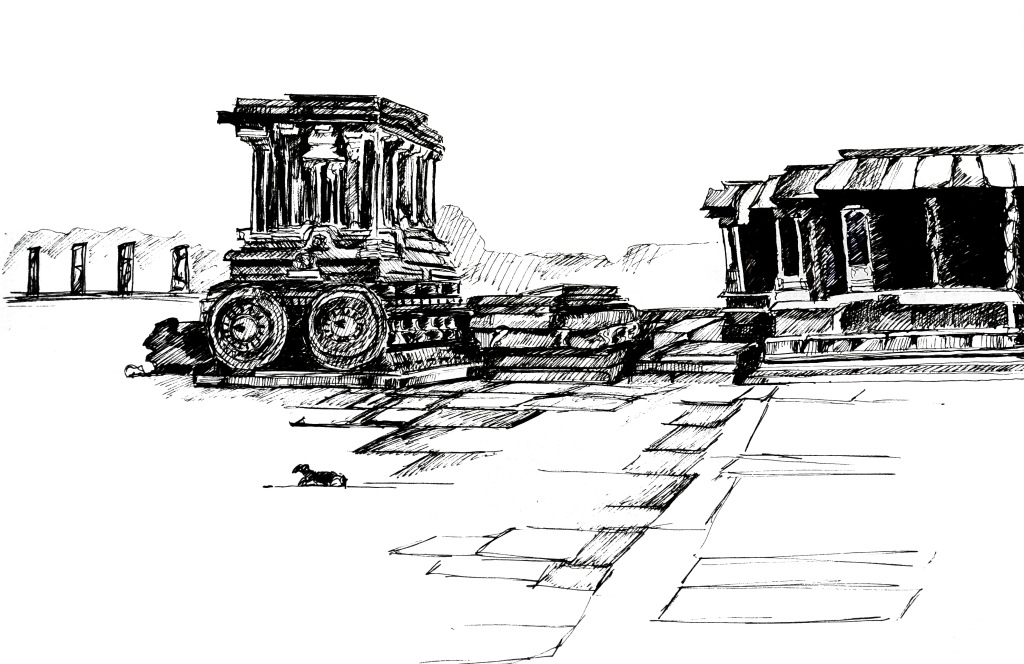
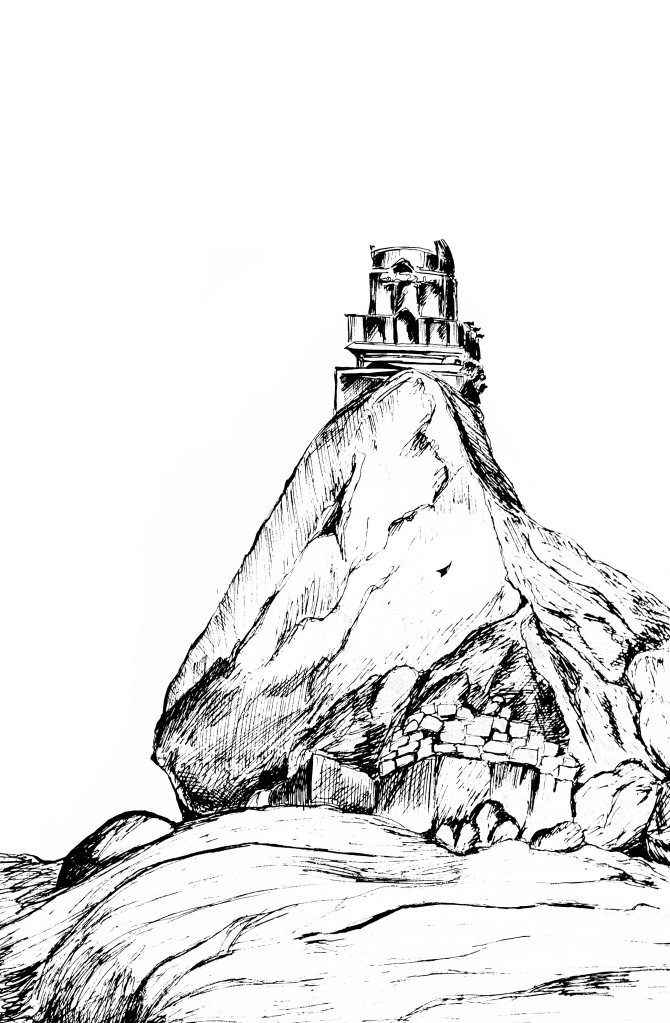
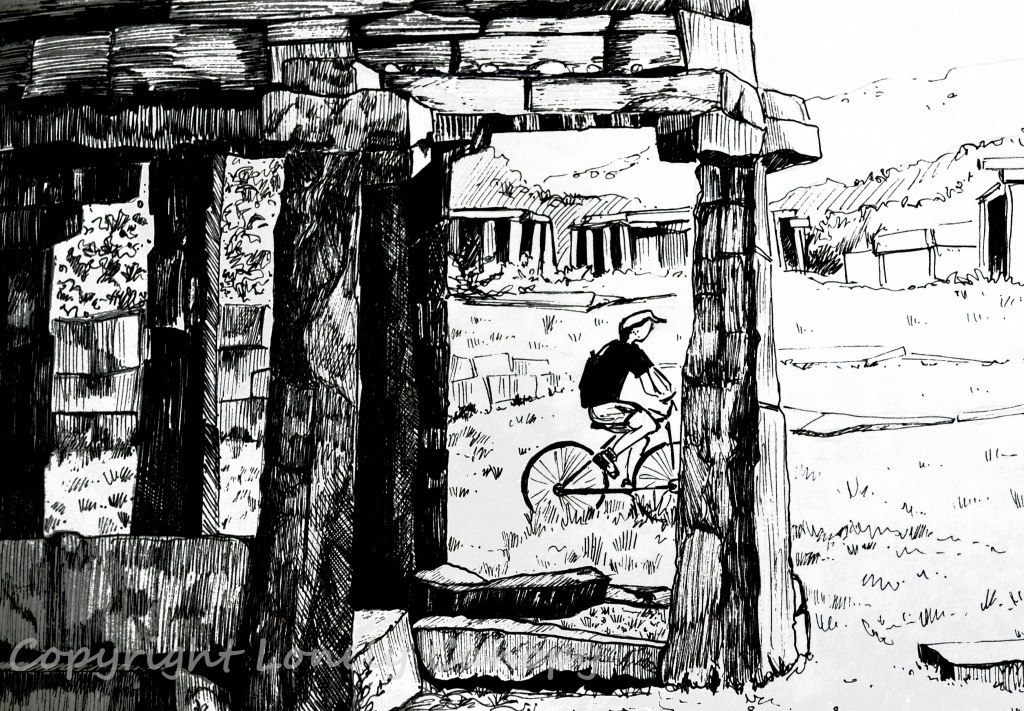
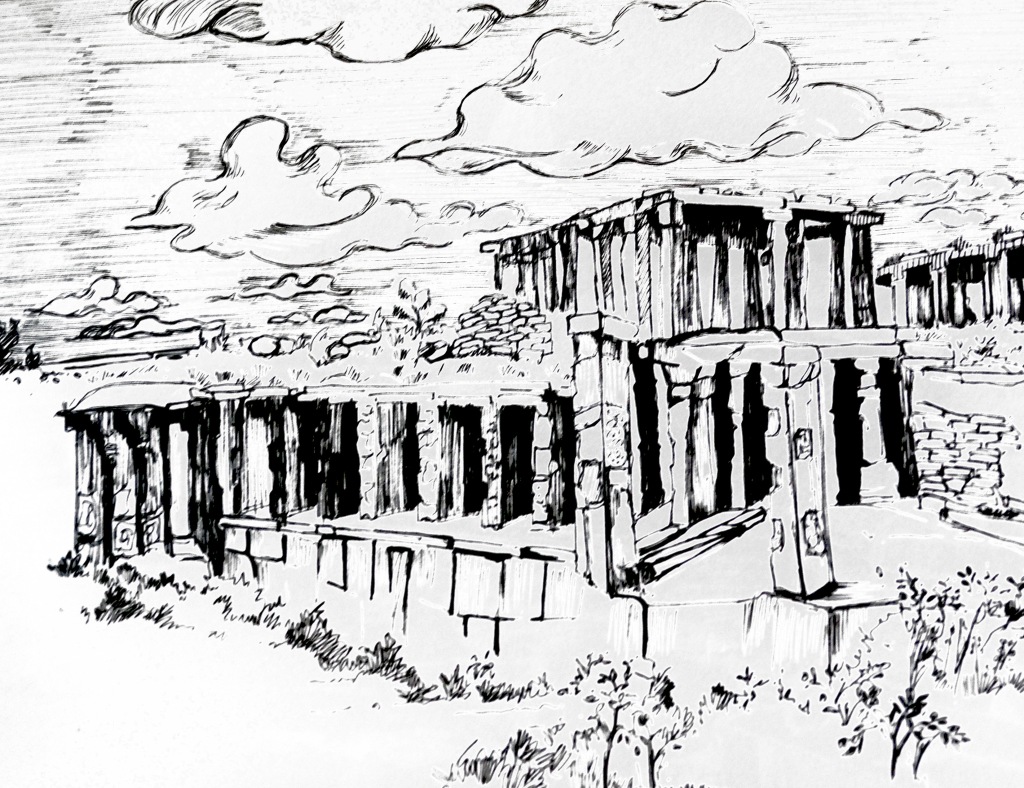

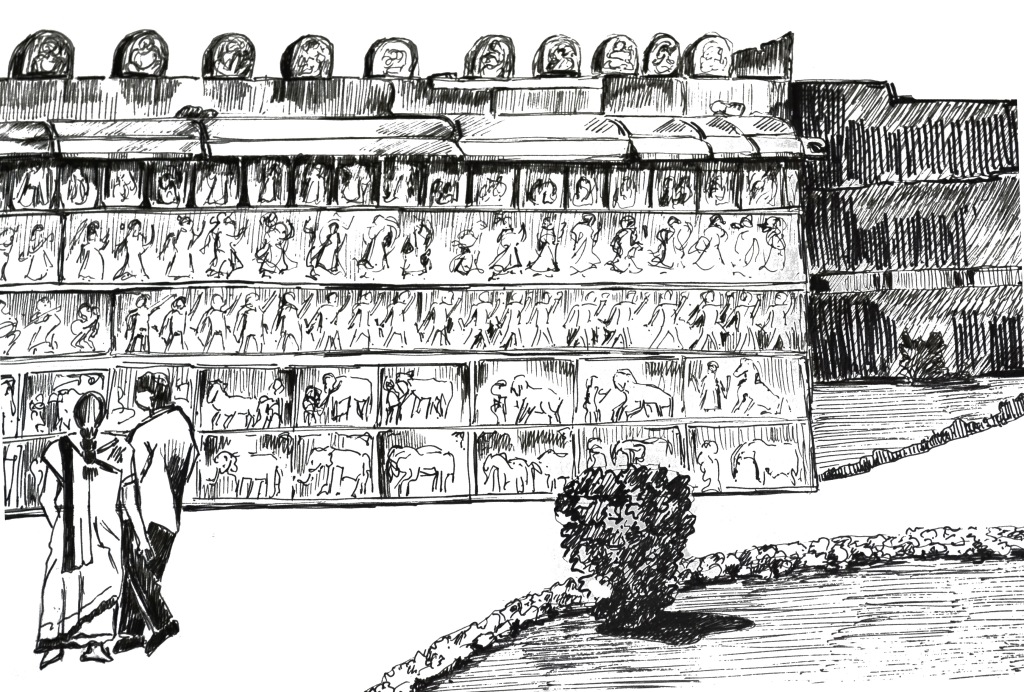
Memory
(Written by Agni Barathi - Technologist, philosopher, poet, and wanderer.)
Who would remember
the sighs, the groans
the cries, the howls,
the laughs, the smiles?
Who would remember,
the great grand works
of he who tilled these fallow lands
of he who carved the unyielding rocks
of she who sang a song of new spring
of she who drew kolams at dawn?
Who would remember
them whose sighs, groans and cries,
and howls, laughs and smiles
still echo off these magnificent rocks
on which the monkeys climb and play
in oblivious abandon.
Hampi
My first glimpse of Hampi was of a granite boulder-strewn landscape, in shades of grey, pink, ocher, and light blue. All around were ridges and hills (huge rock piles) dotted with ancient monuments.
Hampi is a heritage town in Karnataka, India. About 600 years ago, it was among the richest places in the world, ruled by the powerful Vijayanagara Empire. This city is situated on the southern bank of the Tungabhadra River. It is identified with Pampa, a princess who performed tapasya for Lord Shiva. Pleased, he married her and took the name Pampapati. The Vijayanagara Empire was built around the Shiva temple, Virupaksha.
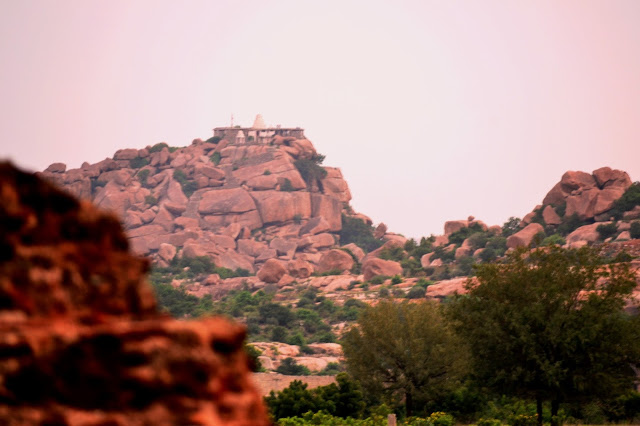
I find monsoon the best time to visit Hampi, though the peak season is December. Frequent showers and cool breeze make it easier to explore the relics. Take your pick – walks, cycling, auto rides, or driving around the city. I remember, during a previous trip in July, the underground Shiva temple was submerged in water, giving it an eerie ‘Tomb Raider’ feel. Small rain-water pools and reflections add to the magic.
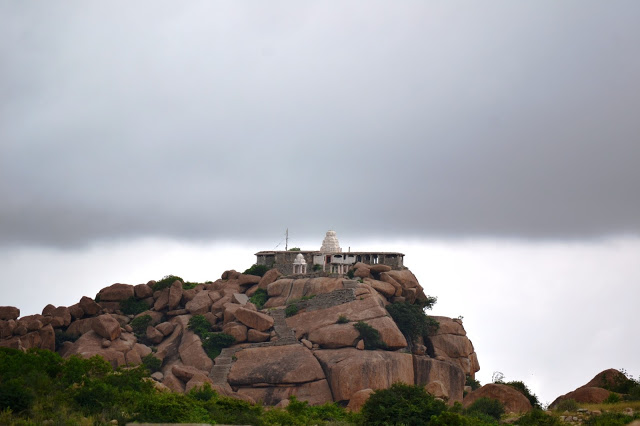
The Sacred Core of Hampi
A walk through the city transports me to a bygone age of rock temples, sacred hills, and royal enclosures. The temples of Hampi, some with active worship, form a strong sacred core. Is this spiritual center the reason this ancient city still captures imaginations?
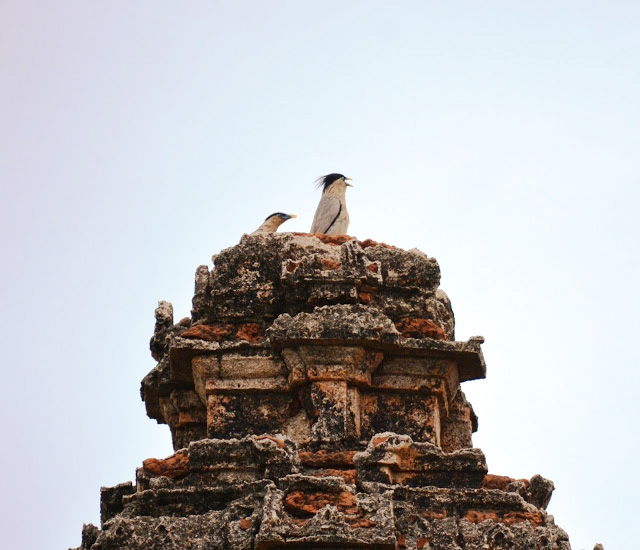
These temples have intricate carvings … the ones in the Hazara Rama temple are akin to a graphic novel! The famous musical pillars of the Vitthala temple, grand Yali pillars – a mythical creature, part lion, part elephant, and part horse, and underground parikrama chambers … there’s so much to observe and obsess over. The chariot at Vitthala Temple and the Krishna Temple are a celebration of Krishna Deva Raya’s victory in Kalinga.
A distinctive feature of Vijayanagara architecture is large monolithic sculptures, such as the Narasimha statue, Sasivekalu (mustard seed) Ganesha, and Kadalekalu (gram seed) Ganesha statues, the Badava Linga, and a huge Nandi near Hampi bazaar.
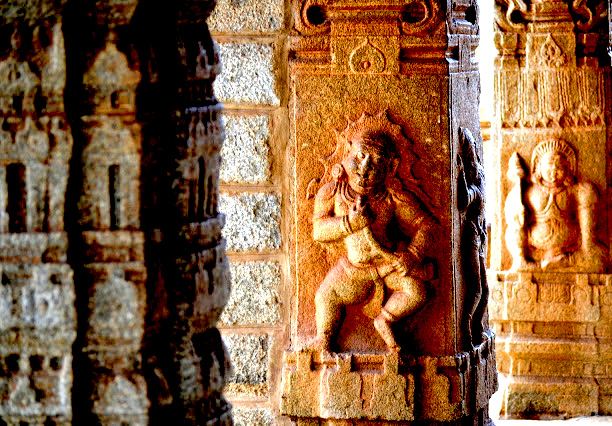
The Hampi bazaar comprises stone shops occupying both sides of the road leading to the Virupaksha Temple. These single and double storeyed shops, though not in their intended state, still make one revel in its imagined glory once upon a time. At the end of the road is the entrance gate of Virupaksha Temple, dedicated to Lord Shiva. The marriage mantapa is the most elaborate structure with murals on the roof that still retains some color. Like many of the Hampi architecture, this one too has a stone foundation with the tops made with slim red bricks. Everything looks so delicately put together like it was always meant to echo through the ages.
Royal and Urban Layout
Apart from the temples and shrines, there are remains of civil structures, canal systems, a row of stone plates (for feeding soldiers), wells and bathing areas, enclosures for Kings, and much more. These are all indicative of a sophisticated and mature civilization.
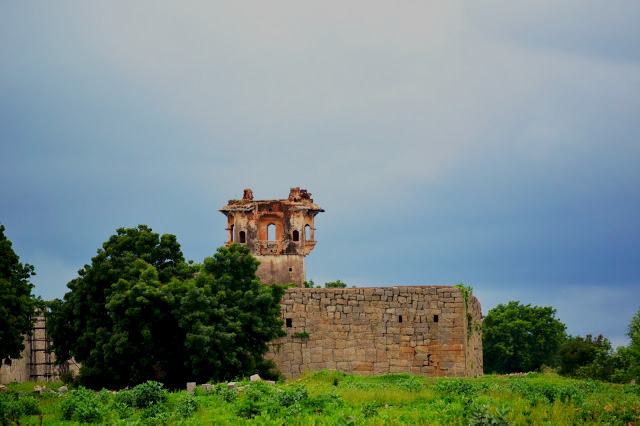
The majestic Elephant stables, zenana enclosure, and lotus bath are simply breath-taking. This enclosure comprises elephant stables, a Lotus Mahal, and viewing towers at the corners of the enclosure. The Indo-Islamic architecture is a blend of two very different cultures. One just can’t resist being besotted with the intricate architecture with a slight Jain influence as well.
Another interesting and unique structure is the King’s Balance. A rather amusing yet historically factual method, to measure the figurative wealth of the king with gold and precious stones. The treasure would then be distributed among priests to mark special occasions.
Hire a guide to learn the myths and meanings behind each carving. Of course, a trip to Hampi is incomplete without a meal at the famous Mango Tree restaurant. It’s a short walk from Virupaksha temple. This walk to the restaurant is lined with cafes and shops – all catering to foreigners and now the hip IT crowd. From Lambani embroidered belts to leather bags, handmade books, and Om printed harem pants – there’s something catchy that you are bound to like, and take home with you.
The Hippie Side
Cross the Tungabhadra in a coracle, from behind Virupaksha Temple, and you land up in Anegundi. This area was erstwhile Kishkindha, the kingdom of Vanaras, where Ram and Lakshman befriended Hanuman. Today, it’s a peaceful hippie oasis. Shacks, with basic rooms and exotic names, dot the river bank. These resorts have trippy artwork, lively music, European cuisine, often uniquely charming/recognizable owners, and are the favourite hangout of foreigners. The verdant farms and rocky horizon add a languid charm to it all. Nights come alive with a host of fireflies. Time stops in this tiny hamlet.
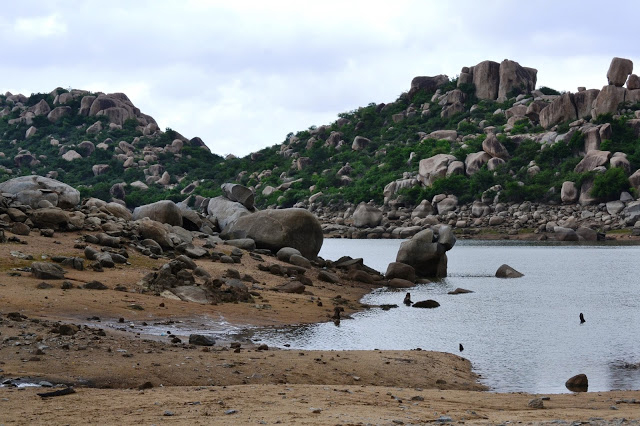
Hire a bike and zip through the roads, stop by at lakes with coracle rides, and climb up to pay your respects to Lord Hanuman at his birthplace atop Anjanadri hill. An interesting fact – Anegundi is about 3,000 million years old and among the oldest plateaus on earth!
There’s always someone interesting to meet around the corner here. Meandering roads through lush green paddy fields and non-intrusive locals present a pretty unique countryside charm. For those who want to take their tranquillity to the next level, there’s probably a joint waiting for them in a cafe. Alcohol is limited to beer.